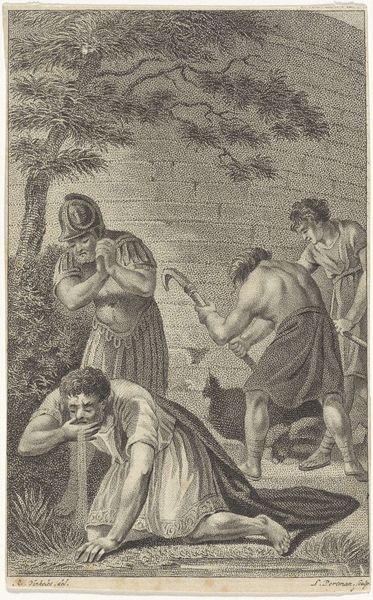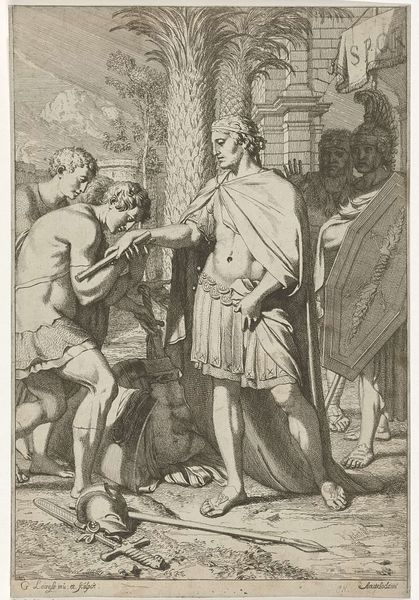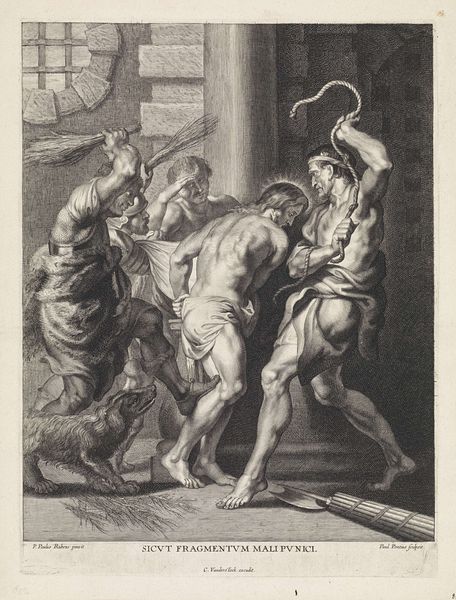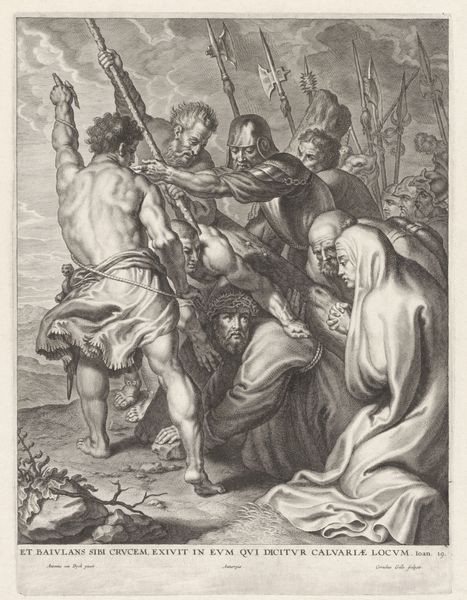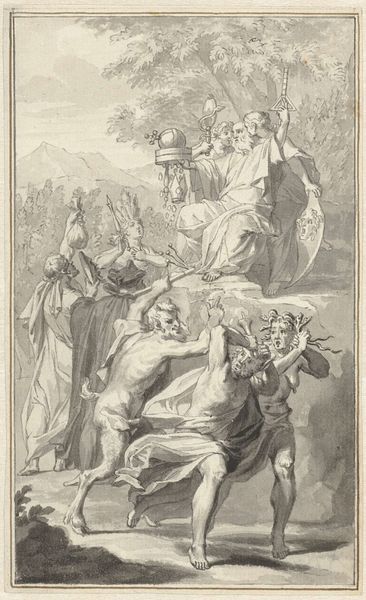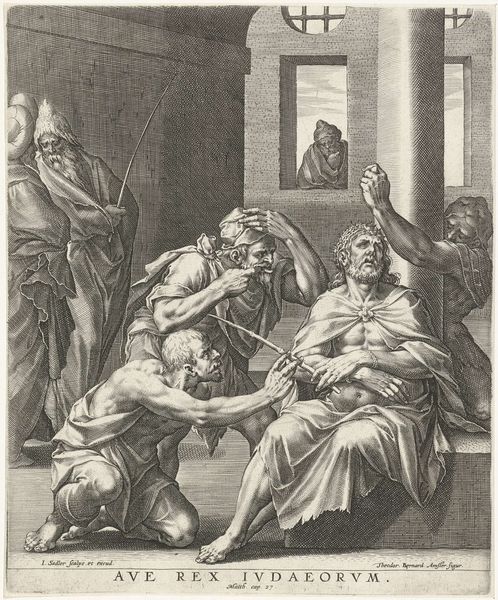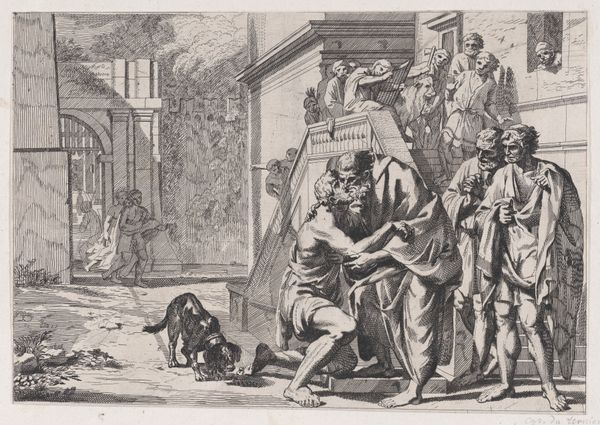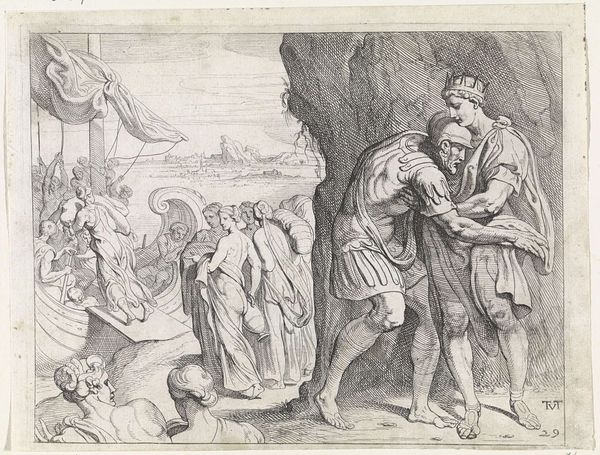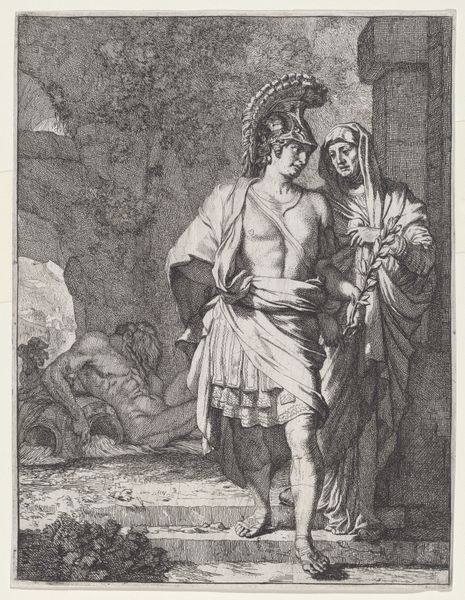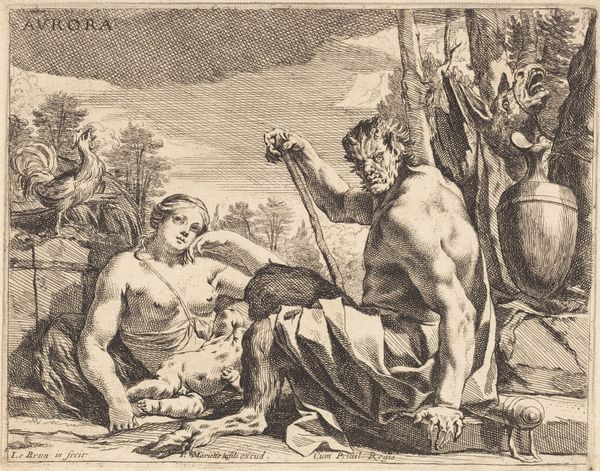
drawing, paper, ink
#
drawing
#
baroque
#
pencil sketch
#
landscape
#
figuration
#
paper
#
ink
#
history-painting
Dimensions: height 198 mm, width 204 mm
Copyright: Rijks Museum: Open Domain
Curator: Well, isn't this dramatic? It's giving me high-art angst! Editor: Indeed! This piece is titled "View of the Ruins of the Basilica of Constantine," a drawing in ink on paper by Bartholomeus Breenbergh. He worked on it sometime between 1610 and 1657, so smack-dab in the Baroque period. I’m interested in how ruins are used as commentary on political authority. Curator: You'd expect that! The Basilica looming, but in utter decay—very poignant, makes you consider how much power even grand structures yield against the sands of time. Almost feels like the figures are performing grief—it certainly makes you think about those grand edifices we leave behind. Are they emblems or tombstones? I wonder what Breenbergh thought. Editor: This piece really highlights the era's fascination with classical antiquity, and, as you say, with power, its use, and its loss. This particular ruin probably stood as a strong symbol of past imperial strength for artists in the 17th century. It asks: how do we view legacy today through monuments and architectural wonders? Does art function similarly, and who decides whose art stands? Curator: That's a thought, but it could just as easily reflect that period’s artistic penchant for exaggerated emotional states. I am thinking particularly of the writhing figure in the front, what he is spewing is a little questionable to me but it has the flair. Does anyone feel so theatrically about something today? Editor: These dramatic poses and depictions are typical of Baroque painting! But, consider how theatre and performance played into civic identity back then. What might seem like "extra" emotion to us may have been essential to claiming visibility or enacting a position, even an adversarial one. Art's emotional registers play an enormous role in signaling identity, especially regarding trauma. Curator: I see. All in all, it really captures the era, its ponderings on power, decay, drama...It asks if anything lasts? Editor: Absolutely. Breenbergh provides a poignant snapshot into the 17th-century mind grappling with the physical remains and lingering impact of previous civilizations, resonating even now, perhaps urging us to contemplate not just physical legacies, but our political ones.
Comments
No comments
Be the first to comment and join the conversation on the ultimate creative platform.
